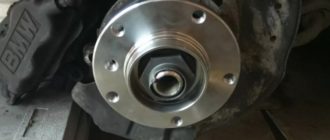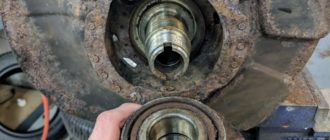During the interaction of the rubbing parts of the automatic gearbox of a BMW, the formation of metal shavings is implied, which, when entering the oil streams, clog the oil channels of the hydraulic block, leading to the malfunction of solenoids and friction clutches, hindering the operation of the oil pump and hydraulic transformer, and, in general, the BMW transmission.
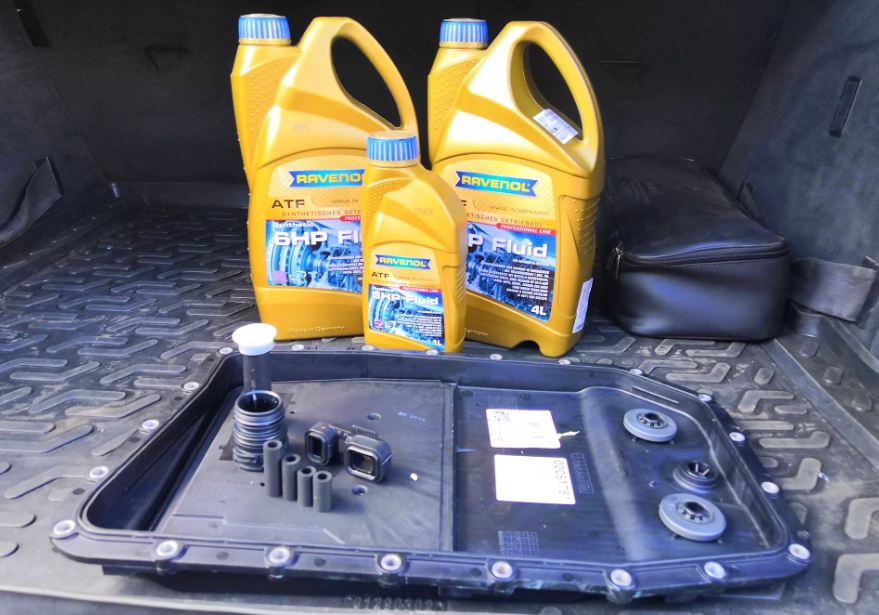
Why Change the Oil in the Automatic Transmission
Outdated oil serves as a significant catalyst for the occurrence of breakdowns in the BMW transmission. Due to the absence of a dipstick in the gearbox, determining the level of lubrication and the degree of wear becomes quite problematic.
It is necessary to carefully monitor the behavior of the car and identify signs of aging ATF. Most often, inconveniences associated with outdated oil manifest in jerks, jolts, and impacts during gear shifts.
Cases of delayed gear shifts or a gear not engaging are also common, with gear shifts slipping during uphill movement, leading to the transmission going into emergency mode.
The process of changing the oil in the transmission of this car is a very responsible procedure. The intervention of an inexperienced person in this mechanism can lead to significant malfunctions.
The quality of the oil poured into the gearbox and its level are essential. In most cases, insufficient oil levels lead to problems.
DIY Automatic Transmission Oil Change for BMW E70
BMW does not manufacture its own transmissions, so they are forced to install ZF automatic transmissions in their cars. According to the manufacturers' recommendations, servicing, including oil changes, should be done once every 90,000-100,000 kilometers.
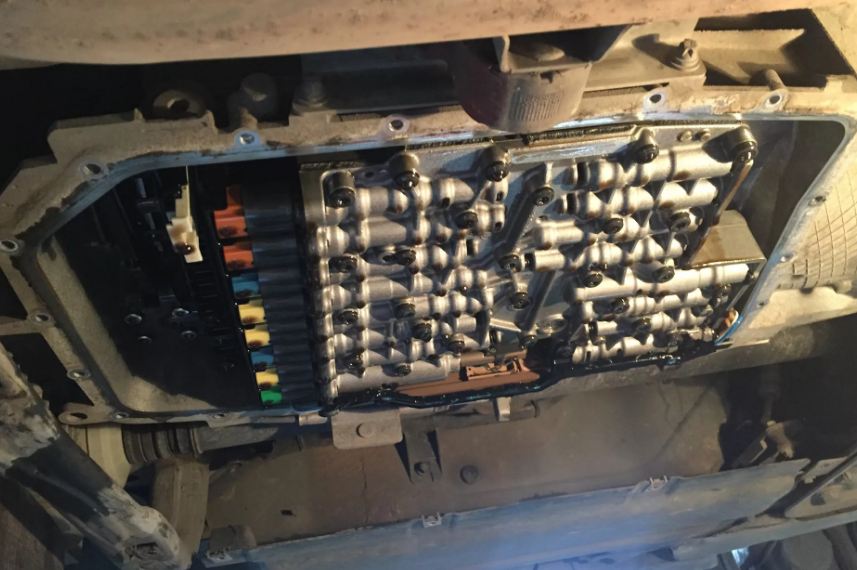
Many car enthusiasts believe that filling transmission oil lasts for the entire lifespan of the transmission, and there is no need to change it. The optimal service life for an automatic transmission without adding new oil is 3-5 years, with an annual mileage not exceeding 30,000 kilometers. This means that oil should be changed when the mileage reaches 90,000-180,000 kilometers.
It is important to note that these calculations were made for operating conditions in European countries, so they may vary in our country. The quality of the oil and its properties also play a significant role.
Step-by-Step Algorithm for Changing Oil
To perform an oil change in the automatic transmission of this model, the following steps should be taken:
- Warm up the car engine. It is sufficient to drive about 5 kilometers in city mode. Place the car with the warmed-up engine on a ramp or inspection pit;
- Remove the protective plastic located under the engine;
- Remove the thermal protection located on the sides of the transmission pan. Before draining the old oil from the gearbox, make sure it is possible to loosen the fill plug, as otherwise, you may drain the old oil without the ability to refill it;
- Find the fill plug located in the right rear quarter of the transmission and loosen it without completely removing it;
- Place a special container under the drain hole, which can be a canister with a wide funnel or a pan;
- Using a 5mm hex key, completely unscrew the drain plug and wait until all the oil drains into the prepared container. The oil is usually dark brown, indicating the need for a change in the absence of metal shavings or a burnt smell.
Do not forget about the need to observe safety precautions.
The pan where the used oil drains should have sufficient width, as the oil does not always drain vertically, and the stream can be diverted. It is essential to work with protective gloves and goggles to avoid burns from splashes of hot oil on different parts of the body.
- Once all the oil is in the pan, unscrew all the bolts and remove the oil filter pan. Unlike a 6-speed transmission, an 8-speed one does not require removing the mechatronics. Simply drain the used oil, replace the gasket, and refill with new oil.
The amount of drained oil was 5 liters, leaving about one and a half liters inside the system. This means that only a partial oil change can be done manually, while a full change is done exclusively at an auto service using a pressure creation device.
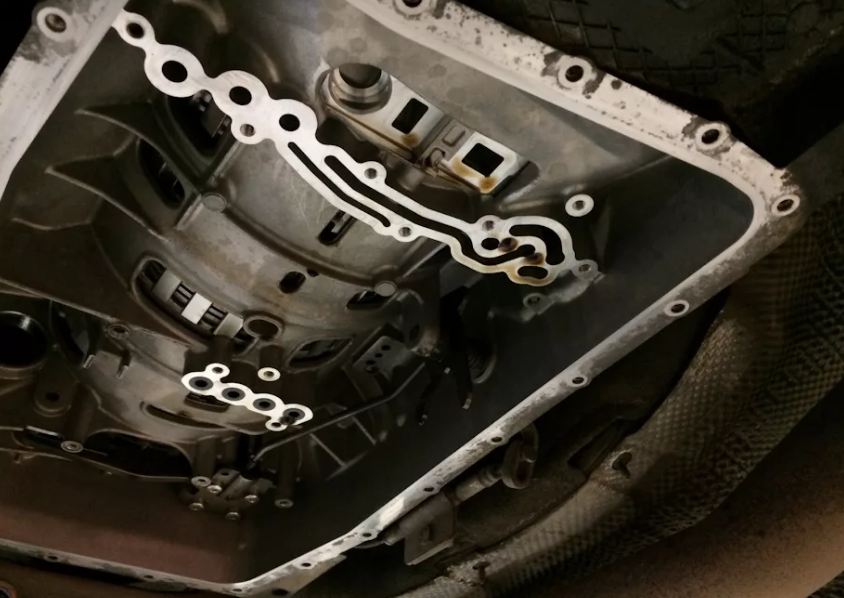
The oil filter is secured with aluminum bolts that can easily break when trying to unscrew them, so to ensure proper filter installation and no oil leaks, they must be removed or drilled out.
Another important point is checking the sealing ring. If it is missing, it can be found in the mechatronics, in the drain neck, from where it must be removed before installing the new filter.
- Install a new oil filter, tightening the bolts strictly according to the provided scheme. The bolts are made of aluminum and are intended for one-time use. Therefore, only those in the kit should be used. After installation, wipe everything carefully to check for leaks;
- Fill fresh oil until it starts to leak from the fill hole. The filling is done using a pump or a 300mm syringe, which can be purchased at a hardware store. The plug should not be tightly screwed in since some more oil will need to be added.
- With the ignition on, shift the transmission lever through different modes, pausing for several seconds. This is necessary for the oil to flow through all the channels;
- With the engine running, add oil to the level where it starts to pour out of the filling hole again since some of it has already flowed into the gearbox;
The final step is to tighten the fill plug, reinstall the plastic shield, and screw in the screws.
Useful Information for Drivers
Each car has an automatic transmission with individual features that should be considered when changing the oil to ensure proper operation. Timely oil changes will prevent jerks or jolts during gear shifts.
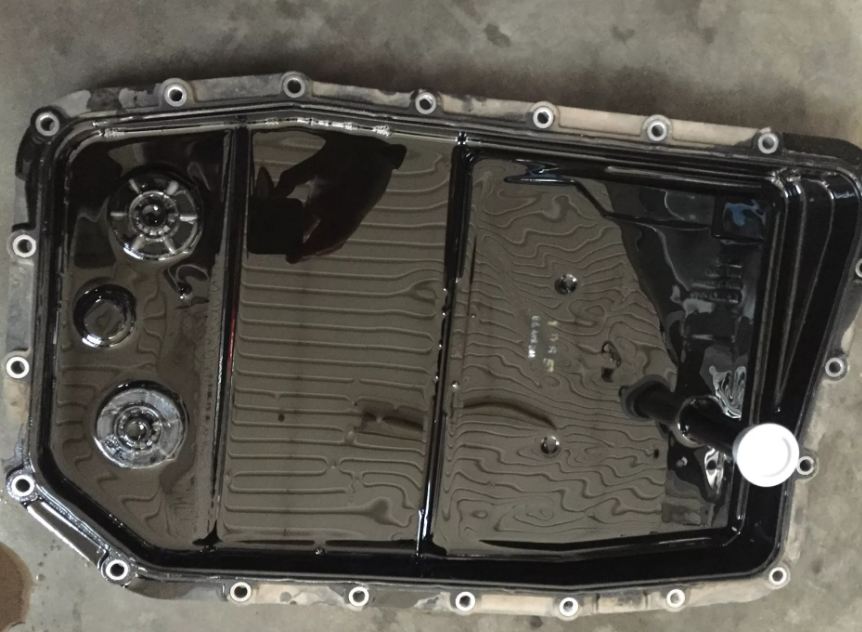
Only original transmission oil should be used for filling, regardless of the chosen oil change mode—partial or complete, with or without removing the mechatronics.
Failure to change the oil on time will lead to irreversible processes inside the gearbox. Transmission oil changes should be done precisely within the specified intervals, the first time no later than 60,000 kilometers, and then once every two years with partial draining and filter replacement. Then the transmission can work for about 400,000 kilometers.


